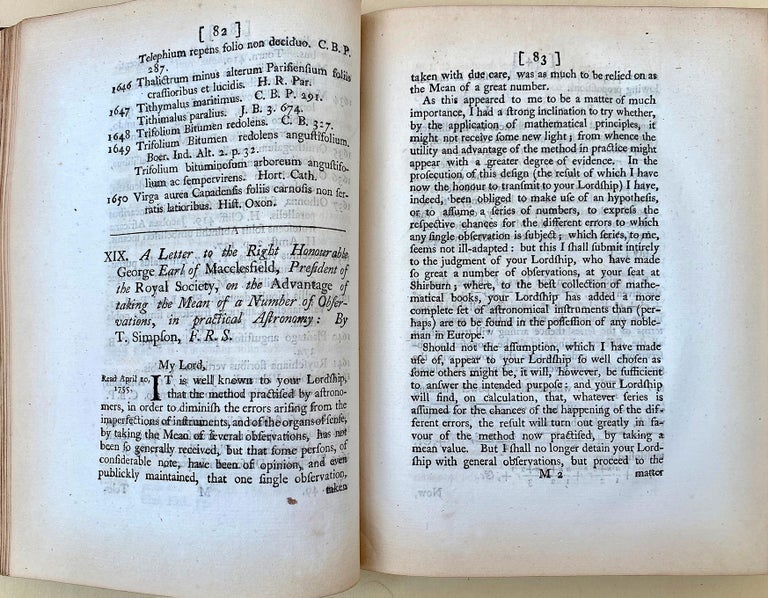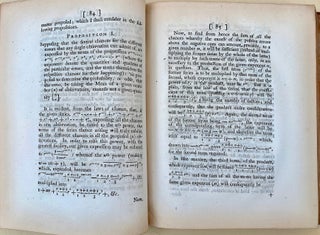On the advantage of taking the mean of a number of observations.
Publisher Information: London: Davis & Reymers, 1756.
Simpson, Thomas (1710-61). A letter to the Right Honourable George Earl of Macclesfield, President of the Royal Society, on the advantage of taking the mean of a number of observations, in practical astronomy. In Philosophical Transactions 49 (1755): 82-93. Whole volume, 4to. [16], 444pp. Folding plates, text illustrations. London: L. Davis & C. Reymers, 1756. 217 x 171 mm. Gilt-ruled calf ca. 1756, rebacked, corners repaired, light rubbing. Margins of one plate soiled and chipped, but very good.
First Edition. Simpson’s paper is considered a milestone in statistical inference, as well as the earliest formal treatment of any data-processing practice. Simpson was the first to attempt to prove mathematically that the mean result of several observations is nearer to the truth than any single observation (the law of large numbers). A key feature of his paper was that Simpson chose to focus “not on the observations themselves . . . but on the errors made in the observations, on the differences between the recorded observations and the actual position of the body being observed . . . [This] was the critical step that was to open the door to an applicable quantification of uncertainty” (Stigler, History of Statistics, pp. 90-91; see also pp. 88-94). “Simpson was the first to characterize the errors in observations as independent events, taking positive and negative values with equal probabilities, and the first to provide a mathematical expression for the probability that the error in the mean result will lie between assigned limits” (Todhunter, History of Probability, p. 309).
Book Id: 35289Price: $2,500.00



